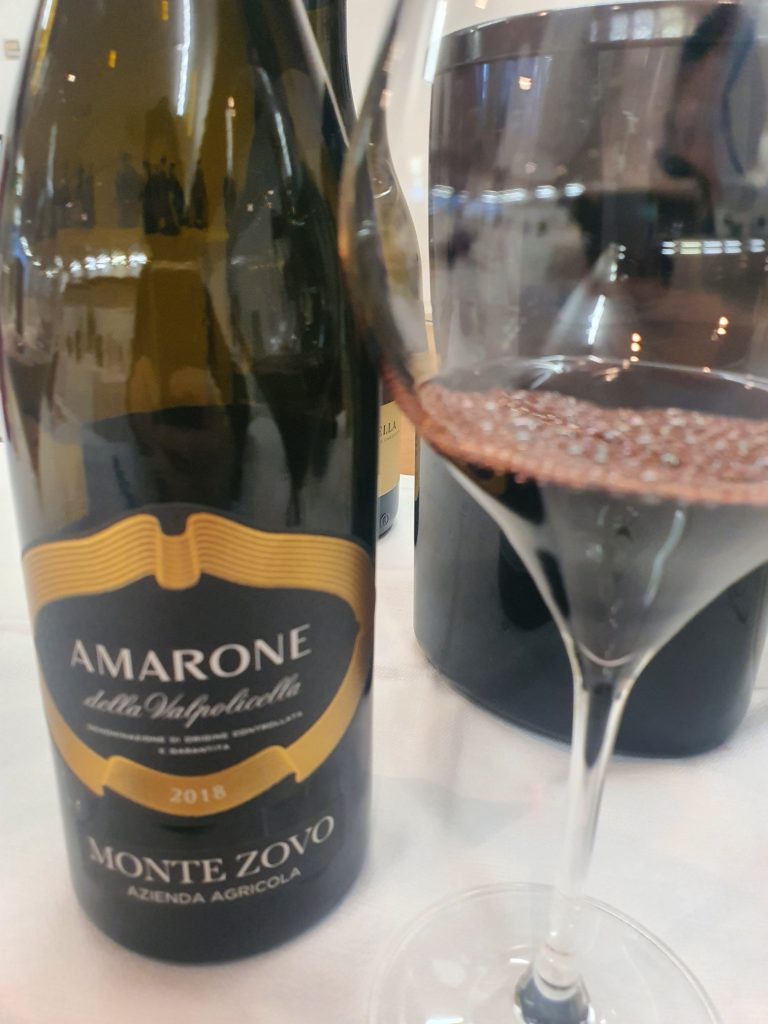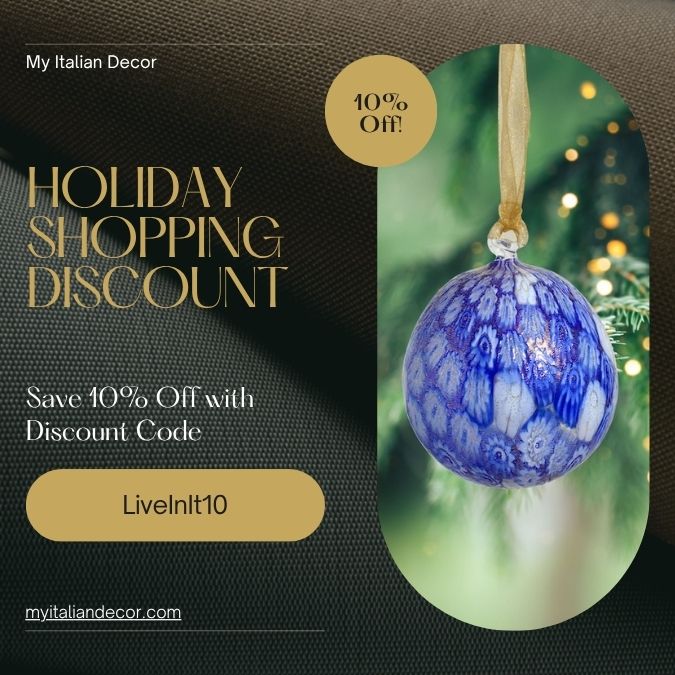Valpolicella History and Top 5 Wine Tastings at Verona Opera Prima
It’s easy to find a bottle of Amarone: all you need to do is look for the people who are smiling. But what makes this wine so special? Let’s take a look at its history, grapes, and characteristics. Plus, read about Amarone 2018 showcased at Verona Opera Prima.
Where is Valpolicella?
Valpolicella is a region in Northern Italy that produces some of the world’s most famous wines. It has been home to winemakers since Roman times when they were making wine with grapes imported from Greece. Today, it produces robust red wines with a fruity flavor profile that pairs well with hearty Italian dishes like lasagna or pasta carbonara.
The Wines of Valpolicella
Wines made from the region’s native grapes include Amarone (which has earned UNESCO World Heritage status), Recioto di Soave (once called “the king of wines”), Valpolicella Superiore, Bardolino Classico Riserva, and some others.
They are made from three grapes: Corvina, Rondinella, and Molinara (otherwise known as Corvinone). These grapes are often blended together to make Amarone della Valpolicella DOCG, which is an incredibly complex and powerful style of wine that requires aging for at least four years before release.
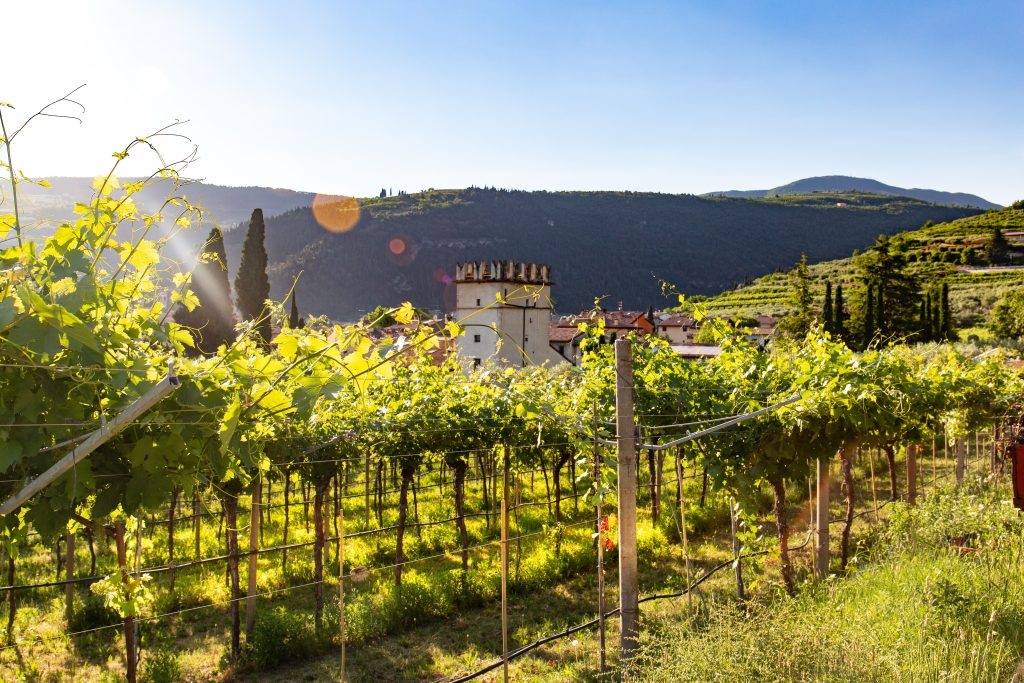
The Story of Amarone della Valpolicella DOCG
Amarone sits at the top of the Valpolicella pyramid—it’s a prestigious wine, so if you’re lucky enough to drink it, savor every moment.
To turn these grapes into wine, Amarone producers use a process called “appassimento.” Winemakers sun-dry the grapes for three to four months, then slowly press them before dry-fermenting. They then age the wine in oak barrels for 2 to 5 years – depending on how the wine is finished. The wine is then bottled and ready to be shipped around the world.
That’s right – Amarone is essentially a raisin! After harvesting, the grapes must be dried by 60% before the remaining juice can be pressed to start winemaking. Not only does this give the wine its distinctive rose flavor, but it also concentrates the sugar in the remaining liquid, ultimately resulting in a characteristically high alcohol level. This is important because the alcohol, while tasteless by itself, brings flavor by giving body to the wine and allowing the Amarone to be as intense as it is.
Slavonian Oak Barrels
Amarone is traditionally aged in large Slavonian oak barrels. The vat size (25 or 50 HL) ensures minimal wood-to-wood contact, so the woody notes and tannins do not overpower the flavors of the Amarone grapes. The thick wood slows down micro-oxidation, allowing the Amarone to develop slowly. Large oak barrels accentuate the elegance of the wine and the aromas of the grape variety. It is common for winemakers to use these larger barrels to extend the aging time to 4-5 years or even 8 years.
Amarone craftsmanship is special from the moment it is harvested. For any good wine, the grapes must be harvested at the correct sugar and phenolic ripeness, and the grapes must be free of defects or rot. But all this wasn’t enough for Amarone. Amarone takes great care in the selection of grapes. The grapes should not be too large, and the most important thing is to be loose, that is, the berries must be kept at a certain distance from each other. They say you have to choose bunches where you can see the stem between one berry and another. When we talk about the drying process, we quickly see why.
Pronounced Tannic Structure
Amarone is a rich wine with a pronounced tannic structure. It usually smells of ripe black and red cherries, blackberries, dried figs, raisins, coffee, and sweet chocolate, but the first sip often proves the opposite: for all ripe, rich fruit, Amarone is a dry wine, and the sweet assumption in the nose often leads to a tight tension when the first sip proves otherwise. Amarones can also be aged in barrels for a long time and depending on the type of wood they’re made from and how long they’ve been aged, sweet spices like vanilla and cinnamon may be added, as well as chocolate, cocoa, and coffee.
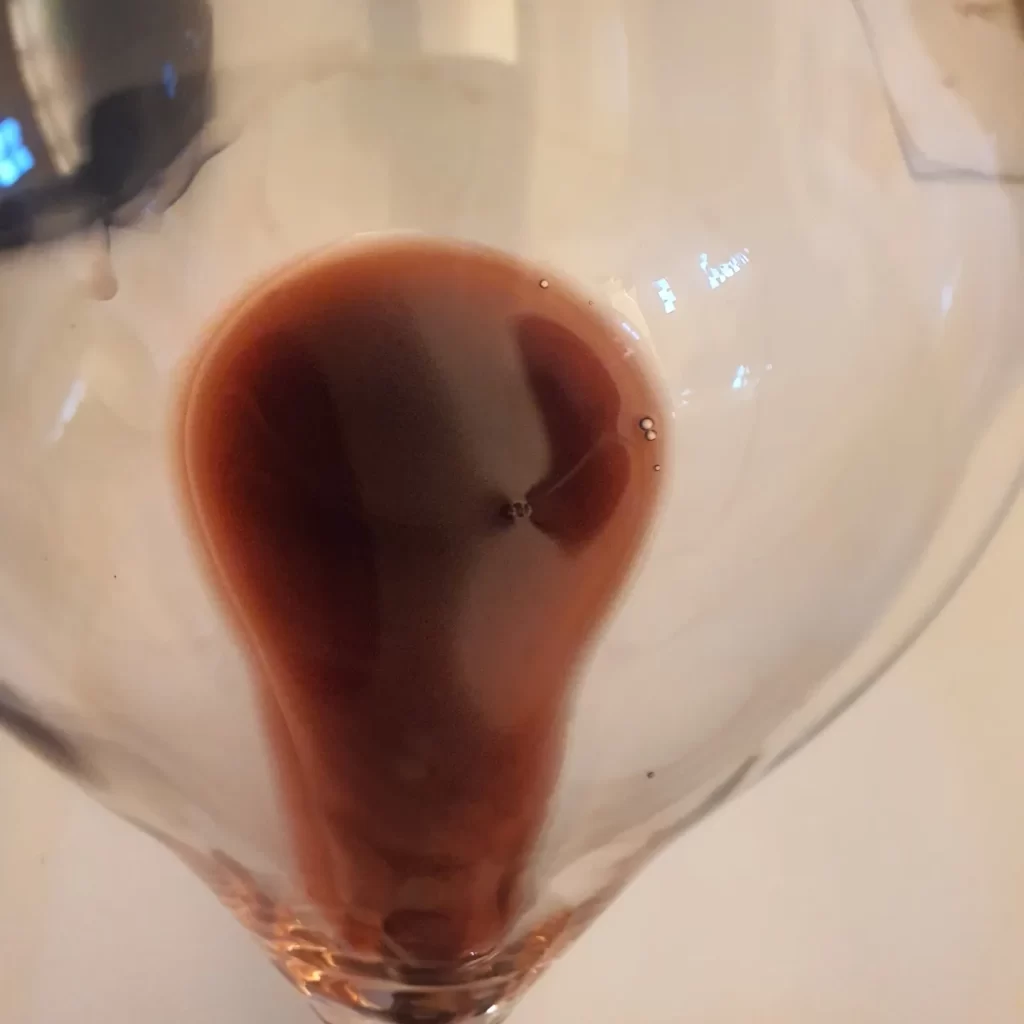
Amarone della Valpolicella DOCG was first produced by monks who lived in monasteries in the area during the 15th century. Traditionally it was made from partially dried grapes before being fermented and aged for at least four years in barrels made from chestnut wood (called “fusti”).
Amarone 2018, the new vintage on stage at Verona Opera Prima
67 tastings of Amarone 2018: a very busy but extraordinary day.
It is difficult to taste so many wines, so different in style, but all embody one thing in common: freshness.
Let’s forget about the 80’s-style high-strength Amarone that’s sometimes hard to drink.
In recent years, this wonderful wine has been transformed into an easier drinking garment, loved by many. I won’t talk about “meditation wine” anymore, but a wine that opens up more palates, for those who want everything fresh.
One feature of the 2018 vintage caught my attention: many of these samples looked like ready-to-drink wines. Already elegant, balanced, and ready to make its mark on the market.
The following are the TOP 5 wine tasting sessions that impressed me the most:
Amarone della Valpolicella DOCG Classico Zymè (barrel sample)
Vegetable notes on the nose, concentrated in the mouth and with a great pleasantness, balanced and the freshness that immediately defines the line.
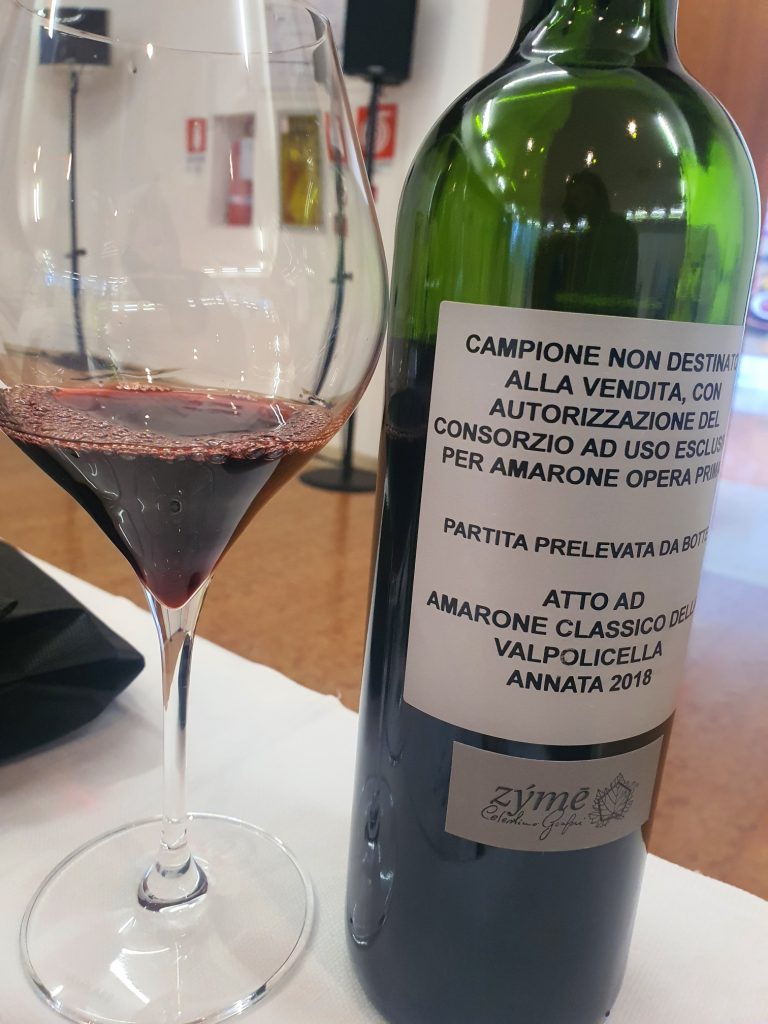
Amarone della Valpolicella DOCG Roccolo Grassi
Pure elegance. At its tasting counter you could taste both the 2018 and the 2015 vintages. Overflowing personality, concentration, full-bodied but an extremely fresh and multifaceted wine. One sip will amaze you — notes of cherry, plum, spicy notes, chocolate, and leather emerge. In the mouth it is soft but with a strong character given by the tannins which are velvety and elegant.

Amarone della Valpolicella DOCG Fattori “Col de la Bastia”: extremely enjoyable wine. Notes of ripe fruit and light balsamic notes on the nose. Definitely a young but already drinkable wine.
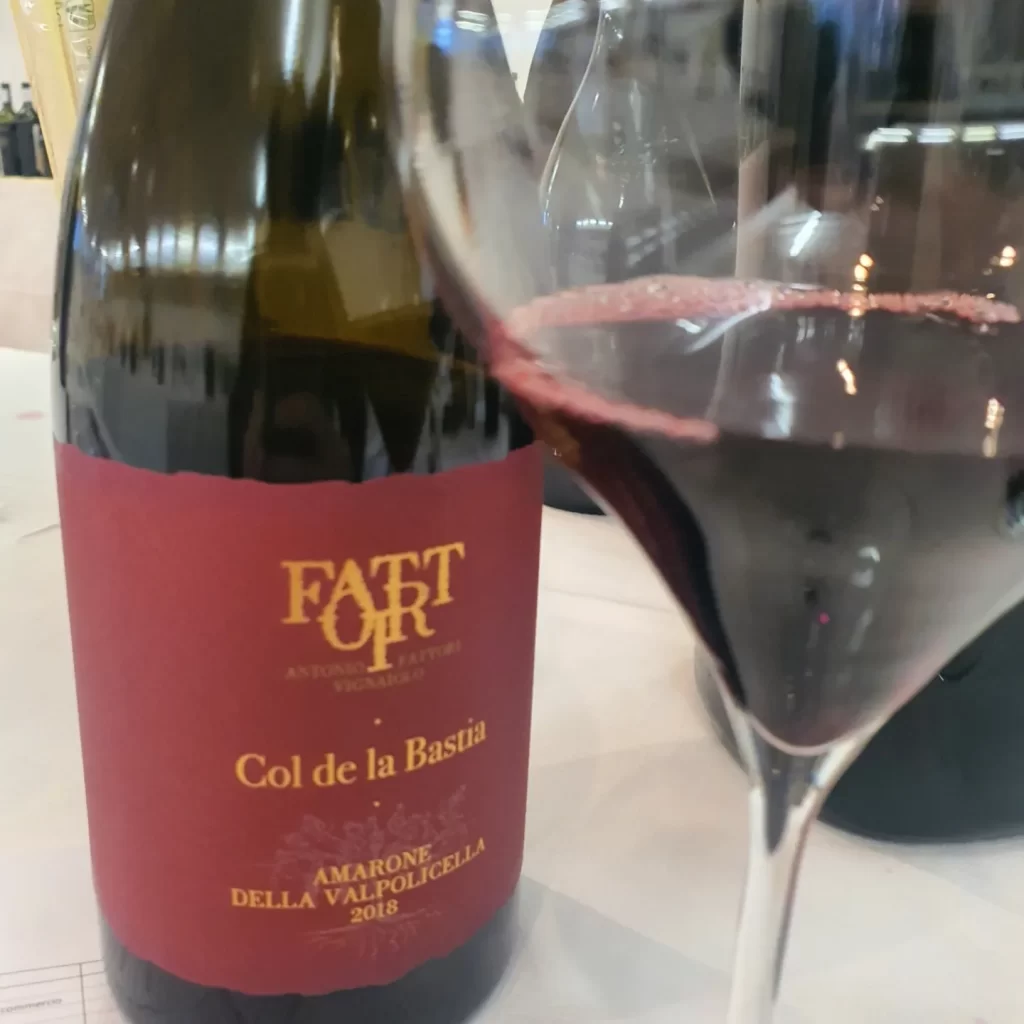
Amarone della Valpolicella DOCG Monte del Frà “Tenuta Lena di Mezzo”
As soon as the nose approaches the glass one is overwhelmed by intense notes of ripe red fruit. Very elegant balsamic notes. A dense tannin that definitely needs time to make it softer and more elegant. A wine to keep an eye on in its evolution.
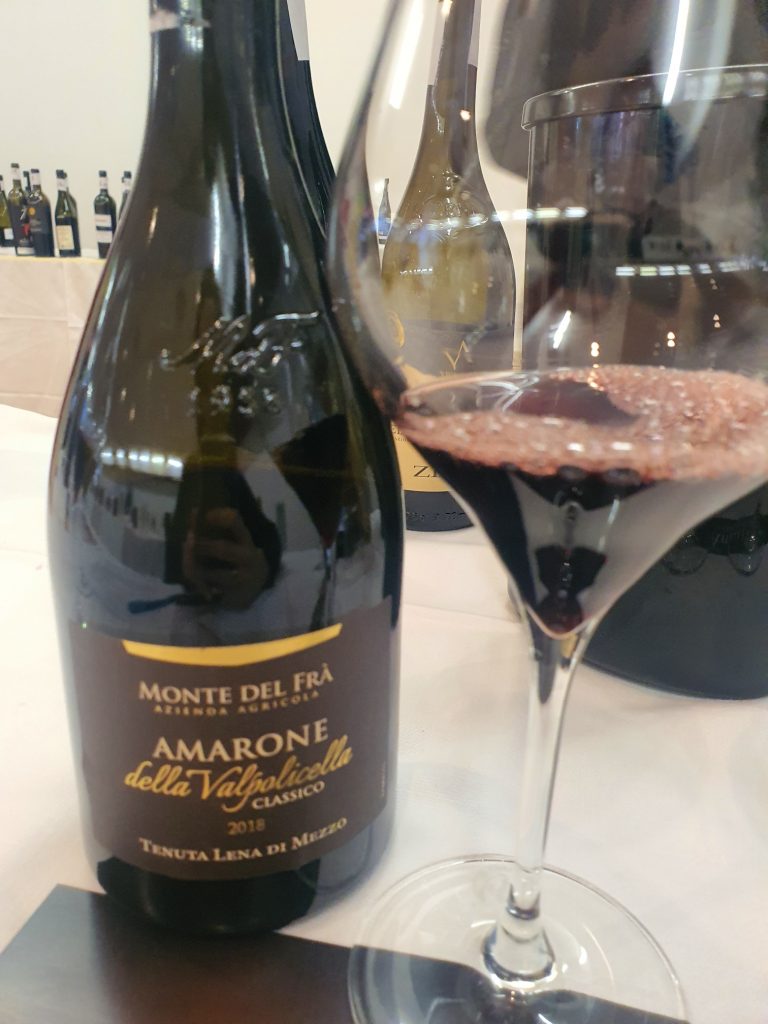
Amarone della Valpolicella DOCG Monte Zovo
A difficult wine for me to define. It has a dense tannin that needs time to evolve but even now this wine knows how to amaze with its balsamic note and Mediterranean scrub, a note above all is rosemary. A wine that will surprise in the future
